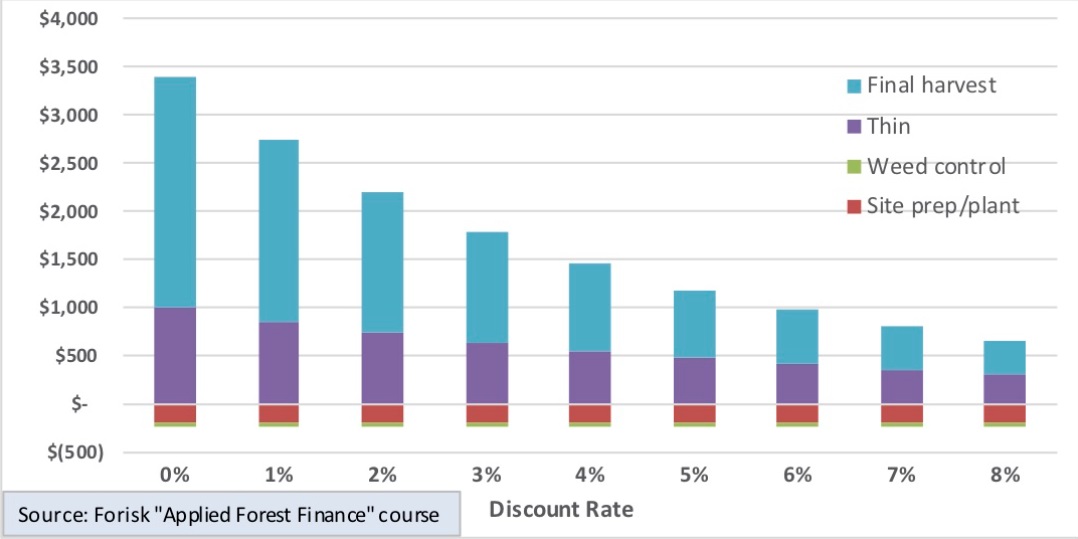Discounts are a concept everyone's familiar with in everyday life—whether it's a sale on your favourite jacket or a special promotion at a local store. But in finance, this concept is far more than just a reduction in price. It plays a crucial role in investment strategies, portfolio management, and financial decision-making. So, what exactly does it mean when we talk about this concept in the world of finance? How do they impact your investments, and why should you care?
Discount's Definition
At the heart of the financial world is the concept of the time value of money (TVM). This principle simply states that money today is worth more than the same amount of money in the future. Why? Because money in your pocket right now can be invested, earn interest, and grow in value. In contrast, money received in the future may lose value due to inflation, changes in interest rates, or shifts in market conditions.
So, when we talk about a discount in finance, we're referring to the process of reducing the value of future cash flows— essentially, adjusting those future returns to their present value. This adjustment is crucial for investors who need to decide how much they're willing to pay today for a future financial benefit, whether it's interest payments, dividends, or any kind of return on investment.
For example, imagine a company offers you a bond that will pay £100 in 5 years. If the current interest rate is 5%, you wouldn't pay £100 today for that bond. Why? Because £100 in 5 years isn't worth £100 in today's terms. You would adjust that £100 to reflect its present value. If the adjustment rate is 5%, you might only pay £78.35 for that £100 bond, because the £100 will be worth less due to inflation and the opportunity cost of not being able to invest that £100 elsewhere.
In essence, applying a discount allows investors to calculate how much future returns are worth today, enabling them to make better investment decisions based on present value rather than simply relying on nominal future amounts.
Discount Rate's Definition
The discount rate is perhaps the most important tool in financial analysis when determining the present value of future cash flows. In its simplest form, this rate is the interest rate used to discount future cash flows, bringing them down to their present value.
But what makes this rate so significant? It reflects the opportunity cost of tying up money in an investment over time, as well as the risk associated with the asset. The greater the risk or the longer the time period, the higher the rate will be. This is why riskier investments, such as stocks or high-yield bonds, tend to have higher rates than safer investments like government bonds.
In practical terms, the discount rate can be based on several factors:
Risk-free rate: This is typically the return on government securities, such as UK gilts or US Treasury bonds, considered virtually free from default risk.
Risk premium: The additional return required to compensate for the risks associated with the investment, including business risk, market risk, and political risk.
Inflation rate: The rate at which the general price level of goods and services is rising, which erodes the purchasing power of money over time.
For example, let's say you're considering an investment that will pay £1,000 in 10 years. If you apply a discount rate of 6%, the present value of that £1,000 would be lower than the nominal value of £1,000 because the future money is worth less than money in your hands today. By applying that rate, you determine that the present value of that £1,000 is only £558.39. based on the time value of money.
The discount rate serves as a bridge between today's values and tomorrow's anticipated returns, allowing investors to assess whether an investment is worth making. If the present value of an asset—calculated using the rate—is higher than the cost of the investment, it might be a good deal. Otherwise, you may want to pass.

Discount Profit's Meaning
Discount profit is a term used to describe the profit made by purchasing an asset at a price lower than its intrinsic value or expected market value. In simpler terms, it's the profit you make by buying an asset at a reduced price and eventually selling it at a higher price, when the market realises its true value.
This concept is particularly crucial for value investors, who look for opportunities where the market is undervaluing an asset. Discount profit is all about finding these opportunities, purchasing assets at a lower price, and waiting for their market price to rise as the asset's true value is realised.
For example, let's say you're eyeing a stock that is trading at £50. but your research shows that the stock's intrinsic value is actually £70 based on its future earnings, growth potential, and market conditions. By purchasing the stock at £50. you're essentially buying it at a reduced price. If the stock's value increases to £70. you've made a discount profit of £20 per share.
Discount profit depends on accurately assessing the value of an asset and identifying when the market is underpricing it. This requires a deep understanding of the underlying asset, its future prospects, and broader market trends. While it's an excellent way to increase returns, it also requires patience and careful analysis, as the market may take time to recognise the asset's true value.
So, what's the takeaway? Discounts, discount rates, and discount profits are all fundamental concepts in financial analysis. Whether you’re valuing an investment, managing a portfolio, or looking for opportunities in the market, understanding how they work is essential to making smart financial decisions.
Investors use these concepts to determine the present value of future cash flows, identify opportunities for discount profits, and manage the risks associated with time and uncertainty. By applying the right discount rate and understanding the true value of assets, you’ll be better positioned to make investments that align with your goals, maximise returns, and minimise risks.
Disclaimer: This material is for general information purposes only and is not intended as (and should not be considered to be) financial, investment or other advice on which reliance should be placed. No opinion given in the material constitutes a recommendation by EBC or the author that any particular investment, security, transaction or investment strategy is suitable for any specific person.



























